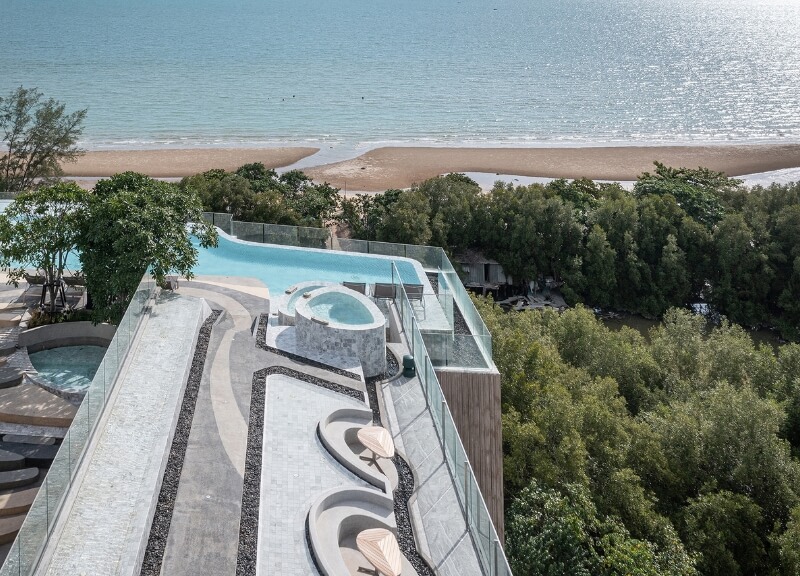
Bayphere Hotel Pattaya: A Story of Ecological Reclamation in Landscape Architecture
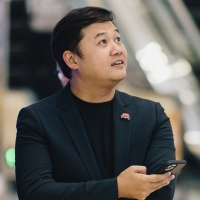
VVdesine Landscape Architecture Co., Ltd., led by principal Vongvasu Chaloisap, has been named Winner in Landscape Architecture – Small Landscape Projects by the Architecture MasterPrize for Bayphere Hotel Pattaya. Nestled on Chonburi’s coastline, this seaside retreat for Habitat Group weaves mangroves, bamboo, and beachfront into an immersive narrative of ecological transformation. We spoke with Vongvasu Chaloisap about his multidisciplinary studio’s approach, the project’s inspiration from local sedimentation practices, and the challenges of integrating architecture and landscape into a cohesive visitor experience.
Could you share some background on yourself and VVdesine Landscape Architecture?
Vongvasu Chaloisap, I hold a degree in Landscape Architecture from Chulalongkorn University and spent three years practicing in Singapore followed by three years at Thailand’s leading design firm. In 2012 I founded VVdesine in Bangkok as a multidisciplinary studio. Alongside Hortus for softscape design and VVplayaround for experimental art, we tackle projects with inventive problem-solving, pragmatic creation, and a focus on human experience and social impact.
What was the client’s brief for Bayphere Hotel Pattaya?
Vongvasu Chaloisap, The goal was to celebrate the Gulf of Thailand’s natural beauty while narrating the site’s ecological evolution. Inspired by local practices of layering bamboo and mangrove stakes to accumulate sediment, we crafted a rooftop pool with panoramic sea views, an open-air ground-floor lobby, and a leisure pod with a waterfall and reflecting pond. Ground-level patterns mimic sea movement, and the design seamlessly integrates architecture, interior, and landscape into a story of reclamation.
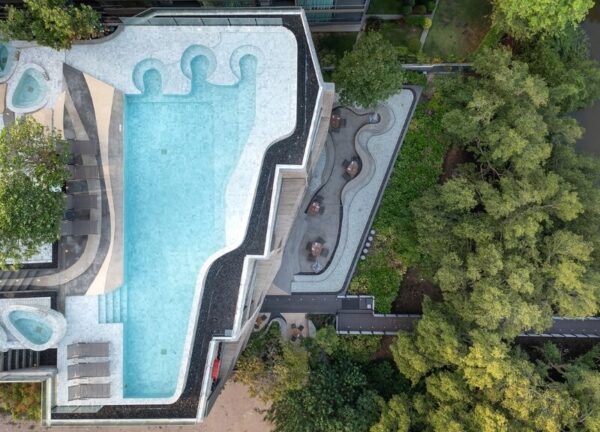
How did your team approach the design process?
Vongvasu Chaloisap, We studied the coastline’s natural evolution and distilled that into fluid, undulating forms—walkways curve like tides, the pool’s shape mirrors waves, and relaxation areas softly sculpt the sand’s movement. Pathways thread through preserved native trees, guiding guests on a journey where built form and nature are inseparable.
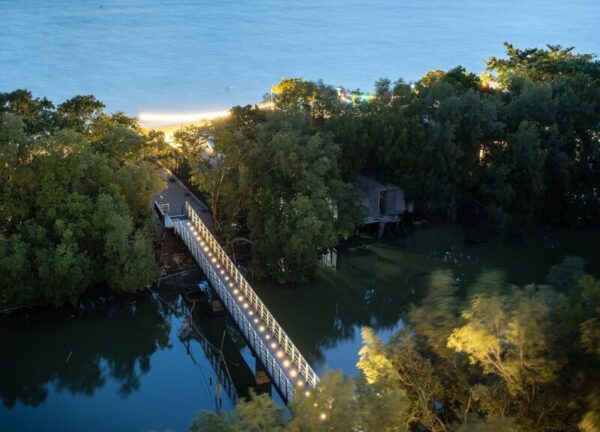
What challenges arose during the project, and how did you address them?
Vongvasu Chaloisap, Nestled on Na Jomtien’s biodiverse beachfront, we needed to integrate the hotel without disrupting local life or ecosystems. Instead of imposing on the terrain, we let the mangroves and bamboo guide the layout, preserving existing vegetation and creating a harmonious dialogue between architecture and nature.
What do you consider the project’s most innovative aspect?
Vongvasu Chaloisap, Our commitment to environmental preservation drove every decision. We retained the site’s mangrove clusters and bamboo groves as defining features, using them to shape circulation and frame views. This approach not only protects the ecosystem but also enhances guest tranquility and connection to nature.
Which outcome makes you most proud?
Vongvasu Chaloisap, I’m proud that the hotel feels born of its surroundings, the soft curves and natural materials reinforce the beachfront’s inherent beauty. Guests move through spaces that celebrate both mangrove canopy and open sea, experiencing a seamless relationship between built form and landscape.
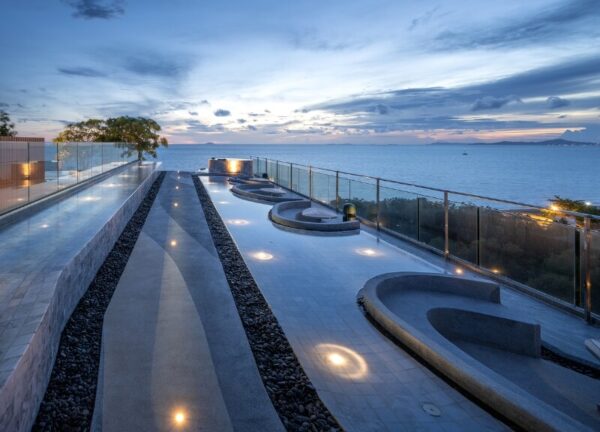
What inspired you to pursue landscape architecture?
Vongvasu Chaloisap, I’ve long been fascinated by good design and how it shapes experience. Childhood curiosity about design led me to study landscape architecture, where I could blend horticultural knowledge with architectural thinking. That journey continues to inform my passion for creating spaces that foster community and environmental stewardship.
Who are your biggest influences in your discipline?
Vongvasu Chaloisap, I draw inspiration from Lawrence Halprin for his human-centric landscapes, Peter Walker for his elegant integration of art and ecology, and Frank Lloyd Wright for his seamless harmony between building and nature.
What future trends or technologies will impact landscape architecture?
Vongvasu Chaloisap, Nature-based solutions will be crucial, integrating green infrastructure, mangrove restoration, and bio-based systems into urban and resort contexts to combat climate challenges and enhance biodiversity.
How can landscape design make a meaningful societal difference?
Vongvasu Chaloisap, By transforming urban and coastal spaces into climate-friendly, uplifting environments. Well-designed landscapes clean air, support well-being, and foster social interaction, improving quality of life for all.
What does winning the Architecture MasterPrize mean for you and your firm?
Vongvasu Chaloisap, This recognition validates our commitment to sustainable, artful design. It motivates us to continue shaping projects that honor both people and planet, and further strengthens VVdesine’s presence in the international design community.
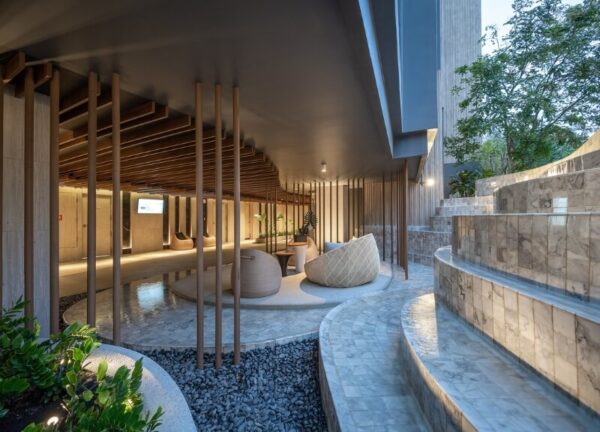
We thank Vongvasu Chaloisap for sharing the inspiration and craftsmanship behind Bayphere Hotel Pattaya, a project that demonstrates how sensitive landscape architecture can tell a powerful story of ecological resilience and human connection.